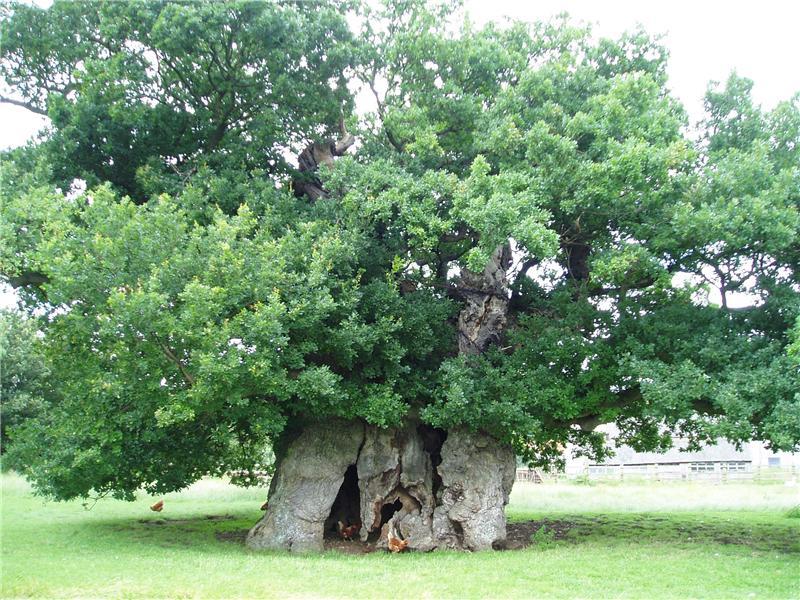Star trees
Kylie Harrison Mellor, 27/09/2018
With 170,000 records on the map it can be tricky to pick out individual trees. That's why we chose some of our favourite trees and made them star trees.
This is a new way to help us celebrate some of the trees and tell their amazing stories. You can use the filters in the Tree Search to look for star trees in your region.
Here we've picked out five of the star trees to give you a taster.
Bowthorpe oak

The bowthorpe oak has a girth of over 12 metres and the hollow trunk was once a dining area.
Oak is the most recorded tree species on the Ancient Tree Inventory and so there a a few oaks which are star trees.
The Bowthorpe oak has a huge girth of 12.30m. It's on private land at Bowthorpe Park Farm near Bourne, Lincolnshire.
The tree has had many uses over the years; in 1768 a floor and benches were fitted and the crown was used as a pigeon house.
It's also said that a previous owner fitted a door in the trunk and used the tree as a outdoor eating space with enough seats for 20 people.
The pulpit yew

The pulpit yew has steps leading through the tree and up to the pulpit.
Yews can live for thousands of years, so not surprisingly there are some wonderful stories about the yew trees recorded on the inventory.
As the name suggests this yew tree is also a pulpit. Steps made of Welsh slate have been placed in the hollow. These lead up to a pulpit overlooking the churchyard.
Over the centuries many sermons have been preached from here. Legend has it that John Wesley, founder of the Methodist Church preached from here.
The kissing tree

The long layering limbs of this tree give it the alternative name of the Kilravock Castle layering beech tree.
This tree is a terrific example of a layering tree. The low limbs have bent towards the ground. Where the limbs have rested on the ground they've taken root.
The kissing tree name is said to originate from an illicit embrace between a family member at the castle and a housemaid. It's also known as the Kilravock Castle layering beech tree.
The great yews at Crom
Located near the ruins of Crom Castle these yews are considered to be among the most impressive trees in Northern Ireland. The Great Yews consist of a male and female that were planted close together in the 17th century.
Its branches were supported by 32 brick pillars but were replaced by oak posts in 1833. Over time these posts were lost and the trees reverted back to a more natural form.
Wyndham's oak

The trunk of Wyndham's oak shows signs of its great age.

The tree has a gruesome history, it was said to be used as a hanging tree.
This tree gets its name from Sir Hugh Wyndham who bought the nearby Stilton Estate. Wyndham was appointed as a judge by Oliver Cromwell in 1659. This proved short-lived; when Charles II was restored to the throne in 1660 the judgeship was revoked.
The tree has a gruesome history; in 1685 amid a revolt in support of the illegitimate son of Charles II it was said to be used as a hanging or gibbet tree.
Discover more star trees
Take a look at the Tree Search to discover more of the star trees. If you have a story about a tree on the inventory add it as a comment to the record.
